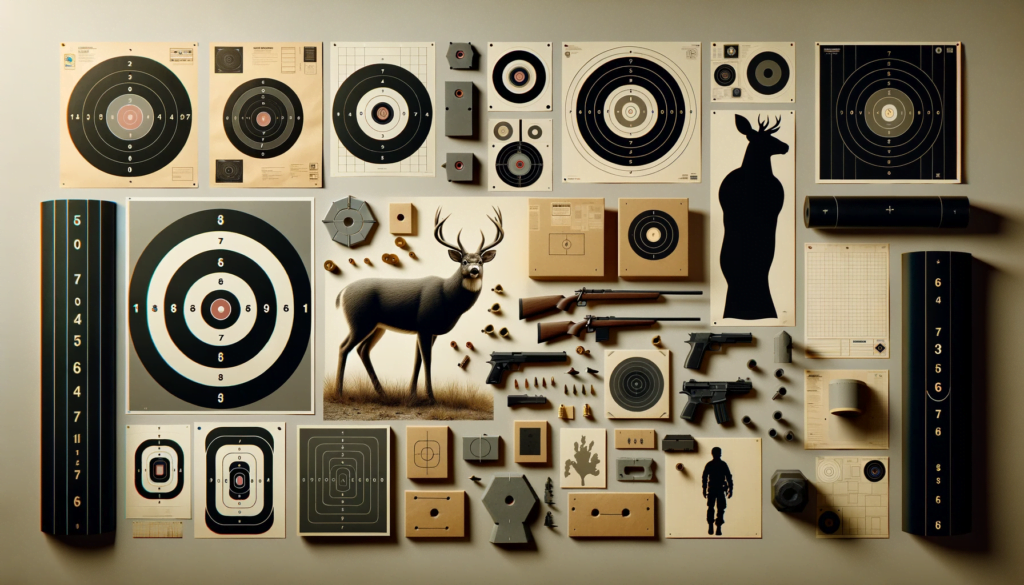How to Choose the Right Shooting Targets: A Comprehensive Guide

Table of Contents
Introduction to Shooting Targets
Welcome to the intricate world of shooting sports! Whether you are a beginner learning the ropes or an expert marksman honing your skills, the choice of your shooting target can significantly impact your practice and improvement. This detailed guide aims to navigate you through the various aspects of choosing the ideal shooting targets that cater to your specific needs.
Understanding Different Types of Targets
Paper and Cardboard Targets
Features and Benefits:
- Variety and Versatility: Comes in numerous shapes, sizes, and designs suitable for various training regimes.
- Cost-Effective: Generally inexpensive, making them ideal for high-volume shooting.
- Scoring Systems: Often includes printed scoring rings or shapes to aid in accuracy training.
Reactive Targets
Interactive Training:
- Instant Feedback: Targets react upon being hit, providing immediate visual and sometimes auditory feedback.
- Enhanced Engagement: Adds a dynamic component to your training, making practice sessions more engaging and enjoyable.
Steel Targets
Durable and Dependable:
- Longevity: Steel targets are incredibly durable and can last for years with proper maintenance.
- Sound Feedback: The distinct ‘ping’ sound upon impact provides instant auditory feedback for the shooter.
3D Targets
Realistic Scenario Training:
- Lifelike Experience: Mimics the size, shape, and sometimes the behavior of various game animals or tactical scenarios.
- Advanced Training: Particularly useful for hunters and tactical shooters looking to simulate real-life scenarios.
Factors to Consider When Choosing Targets
Purpose of Training
- Skill Development: Choose targets that match the specific skills you’re looking to develop, be it precision, speed, or scenario-based training.
- Competition Preparation: If you’re training for a competition, use the same type or similar targets as those you’ll encounter in the actual event.
Environment and Location
- Indoor vs. Outdoor: Indoor environments may have restrictions on the type of targets and ammunition you can use due to space and safety considerations.
- Environmental Factors: Outdoor shooting may require more durable targets that can withstand weather conditions.
Skill Level and Progression
- Beginners: Simple, easy-to-score targets are recommended to build confidence and basic skills.
- Advanced Shooters: Engage with more complex targets that challenge your speed, accuracy, and decision-making.
Ensuring Safety with Shooting Targets
Proper Installation and Usage
- Backstops and Bullet Traps: Essential for capturing bullets safely and preventing ricochets.
- Distance and Angle: Set up targets at appropriate distances and angles to minimize the risk of back splatter.
Regular Maintenance
- Inspect Regularly: Check for wear and tear, especially with steel targets, to prevent unsafe shooting conditions.
- Proper Storage: Store paper and cardboard targets in a dry, flat area to maintain their integrity.
Maintenance and Longevity of Targets
Paper and Cardboard Targets
- Regular Replacement: These targets wear out quickly, so have a steady supply for regular replacement.
- Proper Disposal: Recycle or dispose of used targets responsibly to maintain a clean shooting environment.
Steel Targets
- Rust Prevention: Apply a coat of paint periodically to protect against rust and improve visibility.
- Impact Inspection: Regularly check for pitting or deformation, especially when using high-caliber firearms.
Conclusion and Final Thoughts
Choosing the right shooting targets is about balancing your training needs, safety considerations, and the longevity of your equipment. By understanding the different types of targets and how they can best serve your practice, you’ll be able to make informed decisions that enhance your shooting experience and skill development.
Frequently Asked Questions (FAQs)
Q1: How often should I replace my shooting targets?
A1: The frequency of replacement depends on the type of target and usage. Paper and cardboard targets should be replaced once they become too shot up for clear scoring, while steel targets can last for years with proper maintenance.
Q2: Are steel targets safe to use?
A2: Yes, when used correctly. Ensure they are made from high-quality, hardened steel designed for shooting. Always shoot at the recommended distance, use the correct ammunition, and regularly check for any signs of damage.
Q3: Can I make my own shooting targets?
A3: Yes, many shooters create DIY targets for practice. However, ensure they are safe to use, and always follow local regulations and best practices regarding homemade targets.
Q4: What’s the best target for improving accuracy?
A4: Paper or cardboard targets with clearly marked scoring zones are typically best for precision work. They allow you to clearly see where your shots are landing and adjust accordingly.







